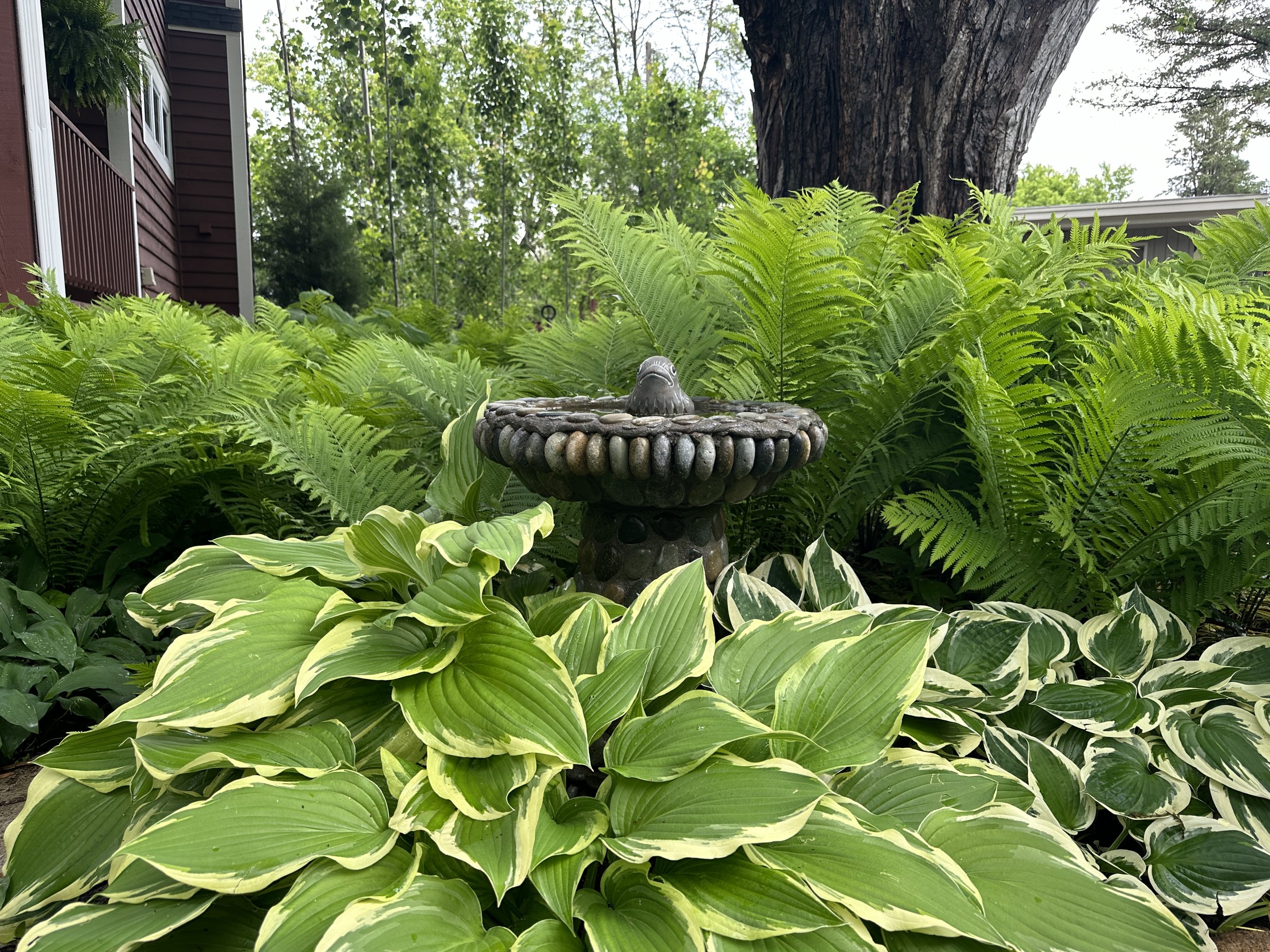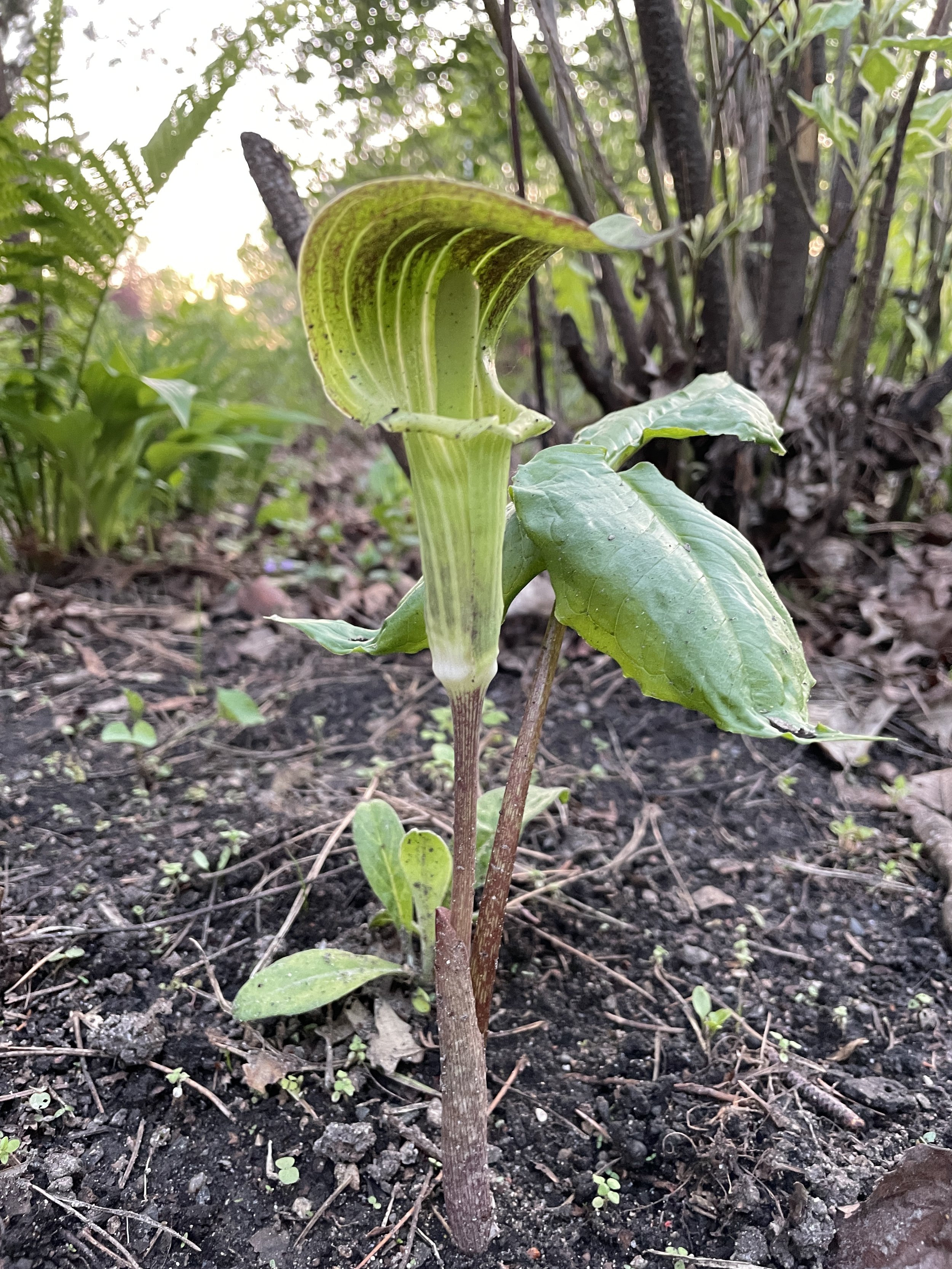The Year of Virginia Waterleaf
It’s April 24, today was cold and rainy. I still went outside in the garden for an hour. Contrary to what the thermometer says, April is the coldest month of the year. I have to turn the heat up to 70. Minnesota is always late to spring. We’ve been so cold for so long, you don’t build up a tolerance, you just get colder.
As I cut back last year’s perennials and raked and leaf blowed (is that a word) the green started to appear underneath. Every year has its volunteers, plants that seed themselves without any help from the gardener. I’m rather tender to them, up to a point. Isn’t that cute that the asters are spreading? They say a good gardener takes out more than they plant. In a perfect world I would tranplant everybody into their own little area and keep things very well organized. Alas, there are thousands. Maybe a million. A lifetime of shoveling. There are other things I want and need to do with my time like eat and sleep. So, I live with, tolerate, and cultivate what I call “plant communities.” Our half acre is divided into these neighborhoods of plants. It’s not a free for all with everyone moving everywhere, but two or three plants species can live together and volunteer themselves in harmony. It looks pretty and like maybe I actually planned it. Those seedlings who jump their imaginary fence will be transplanted if possible or worst case scenario—composted, in which case I feel very guilty. . . but if they’re noxious. . . they brought this upon themselves.
Ferns are a great example. My grandmother warned me about them in 1998 when I dug up ten ferns from the north side of their farmhouse to take to Eagan.
If you know me, you know that I love ferns most of all. But, now I have THOUSANDS of ferns on the property. I have to yank them out of the sidewalks. They live in community with early meadow rue, sedges and hostas. . . right up until they don’t. For twenty years I moved them here and there and everywhere. North, south, east, and west, the ferns loved it everywhere. But they crossed the line. There’s a song. . . every fern is sacred. . . if you know it, you know it.
I still love them. Heart and soul. But we have to have a walkway.
Jack-in-the-pulpit from 2024
Some plants have amnesty. Like special princesses they get to stay wherever they sprout. Columbine. jack-in-the-pulpit. Virginia bluebells. My mom snuck the bluebells into the woodland one year while I was nursing a baby. The next spring I had no idea where they had come from. A beautiful surprise. It used to be that anything native or considered a wildflower was sacred. Now in the twenty-fifth summer even excess coneflowers see the bin. If only I had more time. . .
I curse the day my neighbor gave me the garlic chives with the sweet little white flowers. Now on our hands and knees with weapons of destruction we have to “de-chive” whole areas. Not native. Not sacred. Invasive and deep-rooted. And smack dab in the middle of every God-fearing normal plant.
Who knows why, but most years there is one species of perennial that seems to have a particularly fertile winter. It sprouts up everywhere. For better or for worse. Why all the blue fescues in 2021, the asters in 2022, and why did my cute little sedges turn into a shag carpet in 2023? In 2024 it was ligularia. I transplanted the first 30 volunteers but eventually. . . the guilt and the compost. Sigh. I should have a sale. Put them in cute clean little four inch plastic pots and label them $5. Or, even set them out at the curb with a “free” sign. Next year.
Oh, and I forgot about the wild ginger. I don’t know when we lost control of the ginger. It was great when it prevented erosion in the ravine. Now it’s coming out of every crevice. How many hours to de-ginger?
I thought you might like to know that here in 2025 the volunteer of the year is. . . drumroll please. . . Virginia Waterleaf. A native wildflower. They make a beautiful white flower that looks like fireworks. . . I bought a six pack from Prairie Restorations about ten years ago. I guess it hit a generational tipping point and this year. . . a carpet of Virginia waterleaves? Leafs? I don’t know. They’re everywhere. Where is my garden knife. My primary defense. If you could only have one tool. You can plant and unplant and it feels very fierce. The orange handle keeps it from being hopelessly lost every hour.
I think most of the waterleafs can stay, but there’s the walkway thing again.
Chaos. Communities. Boundaries. Order. Beauty. Too much of a good thing. Containment. The sacredness of every life. The value of good compost. And does this plant spark joy? The garden holds a million metaphors for life. And faith. And even piano teaching. It is the overgrown garden of life.
These are the things I think about in the early spring, in my hour in the garden, in this the year of Virginia waterleaf.
Virginia Waterleaf 2025


